The floor concrete ratio plays a crucial role in determining the strength, durability, and overall quality of concrete floors. Finding the right balance between cement, aggregates, water, and other additives is essential for achieving a floor that can withstand heavy loads, resist cracking, and provide a smooth, long-lasting surface. 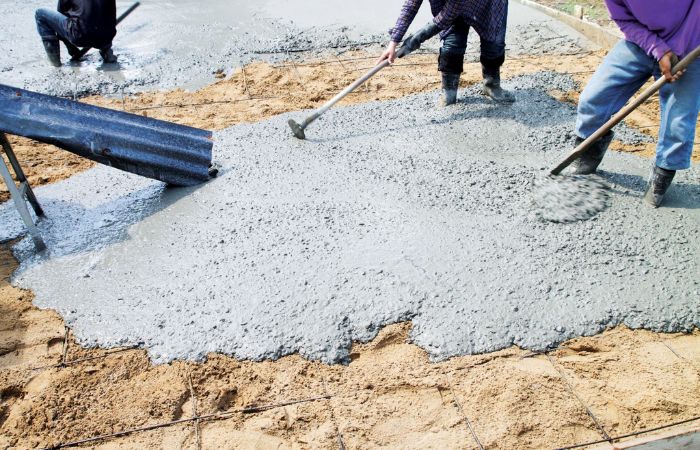
In this blog, we will see the importance of the floor concrete ratio and explore the factors that influence its composition.
Understanding The Floor Concrete Ratio
The floor concrete ratio refers to the proportion of cement, aggregates (such as sand and gravel), and water used in the concrete mix. It is typically represented as a three-part ratio, indicating the volume or weight of each component.
For example, a common ratio for floor construction is 1:2:4, representing one part cement, two parts sand, and four parts gravel.
Strength and Durability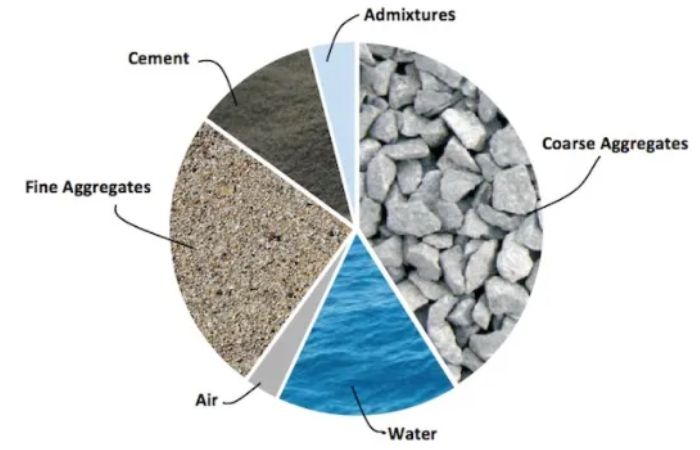
The correct floor concrete ratio directly affects the strength and durability of the finished floor. Cement acts as a binding agent, holding the aggregates together, while water enables the mixture to flow and solidify.
Here is to know, Cement-sand ratio
The right proportion of these components ensures that the concrete achieves sufficient compressive strength, allowing it to bear heavy loads without cracking or breaking.
Water-Cement Ratio
One critical aspect of the floor concrete ratio is the water-cement ratio. It refers to the amount of water used in relation to the amount of cement. Maintaining an appropriate water-cement ratio is crucial because an excess of water weakens the concrete, leading to reduced strength and increased susceptibility to shrinkage and cracking.
Conversely, insufficient water can result in poor workability and inadequate hydration, compromising the concrete’s integrity.
Aggregate Grading
The grading of aggregates used in the concrete mix also impacts the floor concrete ratio. Properly graded aggregates ensure optimal particle distribution, enhancing the strength and workability of the mixture.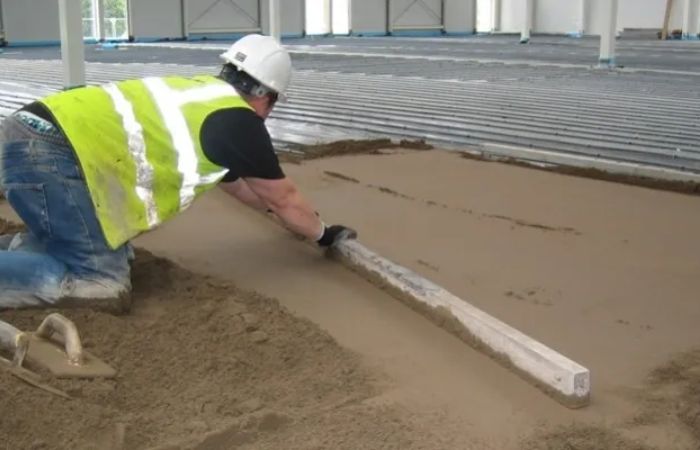
Well-graded aggregates provide a dense matrix, reducing the risk of voids and improving the overall quality of the floor.
Concrete Floor Polishing
It is a process of transforming raw concrete surfaces into smooth, glossy and aesthetically pleasing surfaces. It involves grinding, honing and polishing the concrete surface to achieve a desired level of shine.
Consider best cement for house construction
It offers numerous benefits including durability, low maintenance requirements and aesthetic appearance. Here we will look at the preparation of concrete floor polishing.
- Surface Preparation: This involves cleaning the floor to remove dirt, debris or any existing coatings or paint. Additionally, any cracks or imperfections in the concrete are repaired, ensuring a smooth and even surface for the polishing process
- Grinding and Honing: Grinding the concrete surface using specialized equipment whereas honing involves further refining the surface by using progressively finer grits.
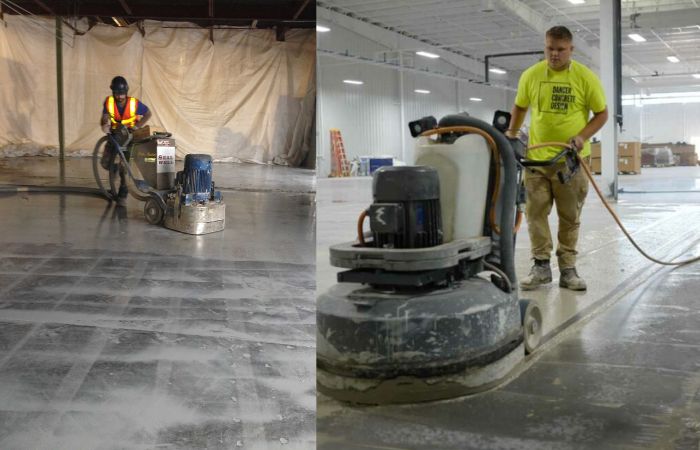
- Polishing: Polishing pads with progressively finer grits are used to create a polished reflective surface . The number of polishing pads used and grits depends on the shiny surface.
- Densification and Sealing:To further enhance the durability and appearance of the polished concrete floor, a densifier is used. After densification, a sealer is applied to protect the polished surface from stains, spills, and wear. The sealer also enhances the floor’s shine and makes it easier to clean and maintain.
Advantages of Concrete Floor Polishing
- Polished concrete floors are highly resistant to wear and tear, making them ideal for heavy traffic areas.
- They are easy to clean and maintain
- Routine dust mopping or occasional mopping is sufficient
- They have a sleek, professional look that can enhance the overall aesthetic of the space.
- It is a cost-effective solution compared to other flooring options
- It is an environment-friendly option as it utilizes the existing concrete slab, eliminating the need for additional materials
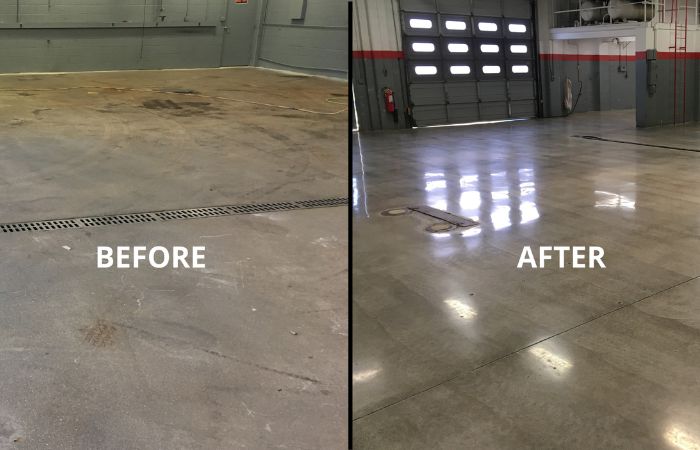
Disadvantages of Concrete Floor Polishing
- The process requires specialized equipment, skilled labor, and multiple steps, which can contribute to higher upfront expenses
- If the concrete is severely damaged, uneven, or has extensive cracks, additional repairs may be required before polishing.
- Concrete floors, including polished ones, have low insulation properties. They can feel cold in colder climates and may require additional heating systems to maintain comfort
- Polished concrete floors can be slippery, especially when wet. This can pose a safety hazard in areas prone to spills or where water is frequently present, such as kitchens, bathrooms, or industrial settings.
- Polished concrete typically has a minimalist and industrial aesthetic, which may not align with all design preferences. However, decorative options like staining, stenciling, or engraving can be applied to create more customized looks.
Confused….? – Here is to know recommended thickness of cement plaster
Laying Concrete Floor with Strips and without strips
Laying Concrete Floor with Strips
Laying a concrete floor with strips involves pouring concrete beams or strips in specific locations to support load-bearing walls or structural elements.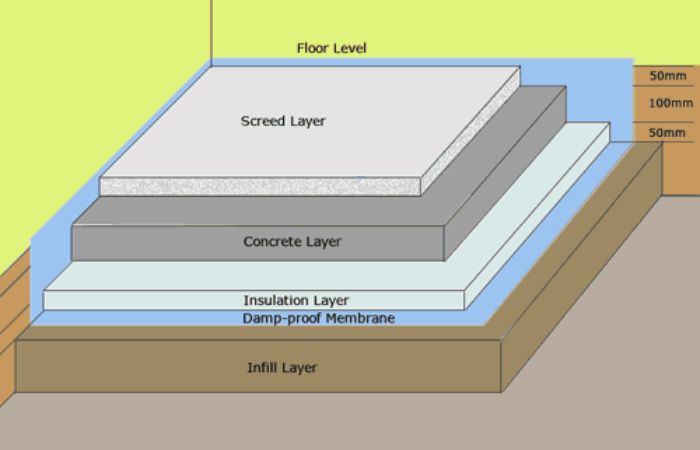
The process typically includes excavation of trenches, placement of reinforcement, installation of formwork, pouring of concrete, finishing, curing, and subsequent removal of formwork.
Advantages of using Strips
- Increased Load-Bearing Capacity
- Flexibility in Design
- Reduced Concrete Usage
- Improved Load Distribution
Laying Concrete Floor without Strips
In some cases, a concrete floor can be laid without the use of strips. This method involves pouring a continuous concrete slab without the presence of beams or supporting strips.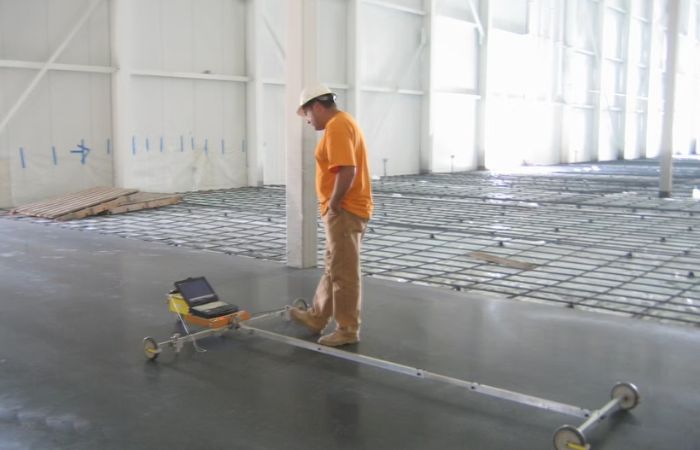
The process includes site preparation, excavation, installation of reinforcement, formwork, pouring of concrete, finishing, and curing.
Advantages of not using Strips
- Simplified Construction
- Flexibility in Interior Design
- Improved Aesthetics
CONCLUSION
In conclusion, the floor concrete ratio is a vital factor in the construction of sturdy and durable floors. Finding the right balance between cement, aggregates, water, and admixtures is essential for achieving optimal strength, durability, and overall quality.
The correct floor concrete ratio directly affects the floor’s ability to bear heavy loads, resist cracking, and provide a smooth, long-lasting surface. Maintaining an appropriate water-cement ratio is crucial, as an excess of water weakens the concrete, while insufficient water compromises its integrity.
By understanding and implementing the principles behind the floor concrete ratio, builders can create floors that are capable of withstanding heavy loads, resisting cracking, and providing a smooth, reliable surface.
Read more: Best cement brands in India to consider


